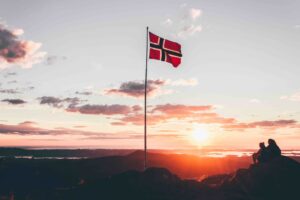Sun Cable, the Australian solar and storage developer with mammoth plans backed by the country’s two richest men, has been tapped to work with the Indonesian government to unlock more than $150 billion in “green industry” growth in the archipelago.
The collaboration was formalised in a Memorandum of Understanding sannounced on Tuesday at the G20/B20 summit in Bali by Sun Cable founder and CEO David Griffin and Indonesia’s minister for energy and mineral resources Arifin Tasrif.
The initial focus of the joint effort will draw on Sun Cable’s experience as a “leading renewables connectivity developer,” as the starting point for Indonesia’s particular set of circumstances, as a country made up of 17,500 islands.
But the broader plan is to build out five key industries identified in a joint study as having the potential to underpin green growth and add up to $A171 billion (IDR1,600 trillion) to Indonesia’s GDP by 2035.
The five industries, identified in the study by Sun Cable and Indonesia’s energy department (EDSM), include mining and minerals processing, energy and fuels, transport manufacturing, food processing and agriculture, and IT infrastructure.

The study also notes Indonesia’s access to a large and relatively young workforce, its wealth in critical mineral resources and its strategic location at the heart of ASEAN growth.
“Indonesia has some of the best renewable energy resources in Asia and many of the core capabilities to become a Green Industry powerhouse,” the report says.
Of particular note, Indonesia is the world’s largest producer of nickel, a critical raw material in the manufacture of batteries for storage and electric vehicles, and is rapidly building its smelting capacity to produce refined value-added “ferronickel.”
Building an Indonesia “super grid”
But unlocking the archipelago’s green economic potential will also require rapid acceleration of new generation, with a 25-fold increase in renewable capacity required to supply zero-carbon demand, according to the study.
And being a nation of thousands of islands, Indonesia will need to plan carefully as it transitions to renewable energy and builds up its clean energy supply chains.
“Energy infrastructure is very important to connect the centers of great energy production to centers of high energy consumption,” said minister Tasrif.
“Thus, Indonesia is planning to build a super grid to address mismatch between renewable energy resources and the location of high electricity demand areas as well as maintaining the electricity system stability and security.”
Australia-Asia PowerLink
Sun Cable, is already intrinsically linked to green growth in the south-east Asia region, via its Australia-Asia PowerLink proposal.
That project – which has the financial backing of tech billionaire Mike Cannon-Brookes and iron ore magnate and green energy evangelist Andrew Forrest – aims to build up to 20GW of solar in Australia’s Northern Territory, and up to 42GWh of battery storage.
This huge amount of solar power and battery storage will be used to provide clean energy for green industry both domestically and for export to Singapore through a 4,200km sub-sea cable.
The high-voltage direct current sub-sea cable, which like other parts of the AAPL project stands to be the largest of its kind in the world, will link to Singapore through Indonesian waters.
To this end, Sun Cable has already been working closely with the Indonesian government, which granted a sub-sea survey permit for the cable in September of 2021 and put forward its recommended route for the transmission cables.
Inter-island connectivity
“We are looking to share Sun Cable’s expertise in solar energy generation and long distance transmission with Indonesia as it shapes its policy and technical approach to inter-island connectivity,” said Griffin on Tuesday.
According to the study, HVDC cable will enable Indonesia to build a ‘super grid’ with cross provincial electricity transmission, effectively bridging the divide between industrial demand centres and renewable generation sites.
The study says the next step of the collaboration between Indonesia’s energy department and “renewables connectivity developer” Sun Cable will focus on evaluating transmission corridors and investment.
“The Joint Study will perform a deeper assessment of regional supply and demand outlooks, renewable resources, and potential transmission routes,” it says.
“An inter-connected Indonesia could help transform its energy systems and deliver jobs, new business opportunities, and major reductions in emissions.”










